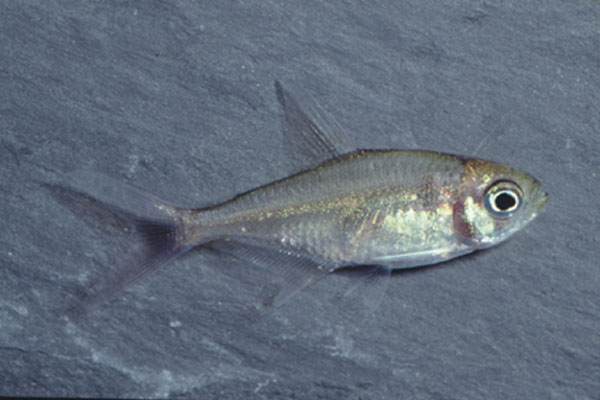| Characidae (Characins; tetras), subfamily: Stethaprioninae |
| 6 cm TL (male/unsexed) |
|
benthopelagic; freshwater; pH range: 5.80000019073486 - 7.5; dH range: 8 - 20; depth range - 1 m |
| South America: Guyana and Venezuela (?). |
|
Anal soft rays: 21-25. Distinguished by having laterally compressed body, moderately elongate; greatest body depth at origin of dorsal fin; dorsal profile of head convex from tip of snout to vertical through anterior border of anterior nostril and straight from that point to tip of supraoccipital spine; dorsal profile of body straight to slightly convex at predorsal region, straight at dorsal-fin base, straight from end of dorsal-fin base to adipose-fin origin and concave along caudal peduncle; presence of middle caudal -fin rays hyaline; five, rarely six horizontal scale row above lateral line and the absence of a midlateral line series of dark anteriorly-directed chevrons (Ref. 100733). |
| Found in clear water streams, running over sand and silt bottoms. Inhabits slow to moderate water current, less than 1m deep. Feeds on aquatic insects (caddisflies larvae, chironomids pupae and Odonata nymph) and arthropods (Ref. 100733). |
|
Least Concern (LC); Date assessed: 04 March 2021 Ref. (130435)
|
| harmless |
Source and more info: www.fishbase.org. For personal, classroom, and other internal use only. Not for publication.

